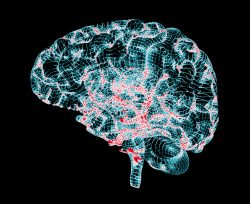 In a recent study, scientists have discovered that the coordination between neuronal activity and the brain’s oxygenation is disrupted in older people. This finding sheds light on the crucial relationship between the brain and the cardiovascular system, as the brain relies on a significant portion of the body’s energy used – up to 20%. To meet the brain’s energy needs, specialized “neurovascular units” play a vital role in delivering enough energy supply to the neurons. This research provides new insights into the complex workings of the aging brain.
In a recent study, scientists have discovered that the coordination between neuronal activity and the brain’s oxygenation is disrupted in older people. This finding sheds light on the crucial relationship between the brain and the cardiovascular system, as the brain relies on a significant portion of the body’s energy used – up to 20%. To meet the brain’s energy needs, specialized “neurovascular units” play a vital role in delivering enough energy supply to the neurons. This research provides new insights into the complex workings of the aging brain.
The activity of neurovascular units in humans has been recorded non-invasively for the first time, due to innovative measurement techniques and analysis processes performed at Lancaster Univ., UK. Infrared light was used to measure blood oxygenation in the brain, penetrating the skull effortlessly. At the same time, the scalp surface measured the brain’s electrical activity, which is related to neuronal activity.
The human body operates on various rhythms – the heartbeat being the most recognized one. These rhythms also include brain waves, respiration and the control of blood flow and blood pressure through the adjustment of blood vessel diameter. By measuring oxygenation, respiration, and electrical brain activity, and heart electric activity simultaneously, researchers are able to study these rhythms and their timing. By computing their “phase coherence,” researchers can study the strength and timing of these rhythms.
The findings demonstrate that both brain vasculature oscillations and brain waves are significantly changed in older individuals. However, the most notable difference lies in the coherence between these two factors, indicating that the communication and synchronization between energy supply and demand in the aging brain are considerably impaired.
This approach is potentially valuable for assessing the deterioration of neurovascular function in typical aging and for tracking the effectiveness of treatment or lifestyle adjustments in various neurodegenerative diseases. The findings offer a straightforward and non-intrusive way to evaluate the brain’s condition in healthy aging and in conditions like Alzheimer’s disease.
To view the original scientific study click below:
Aging affects the phase coherence between spontaneous oscillations in brain oxygenation and neural activity





